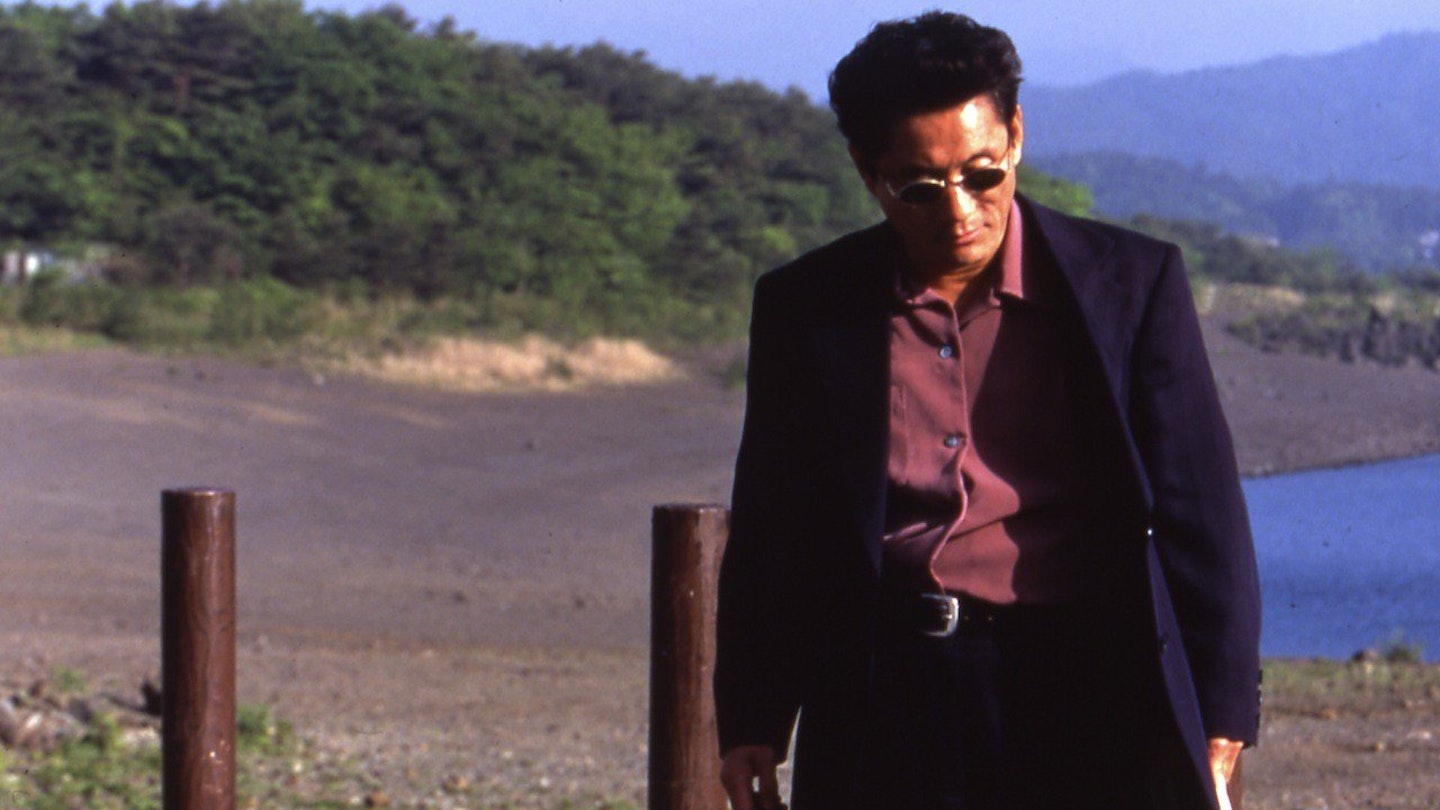Takeshi Kitano began work on this deeply personal meditation on love, violence, grief and loss before his near-fatal motorcycle accident. Echoing themes from both Violent Cop and Sonatine, its blend of death fixation and life affirmation renders it as moving as it's edgy. But this is also a wondrously cinematic exercise in the exploitation of space and stillness and it confirms Kitano as both a highly modern film-maker and the heir to such classical directors as Yasujiro Ozu.
But, in addition to writing, directing and editing the picture, Kitano also bestrides it as the taciturn, short-fused Nishi, who is just as likely to thrust chopsticks into someone's eye as he is to repay a kindness. Considering that his face still bore the effects of his crash, Kitano's performance is incredibly courageous as well as compellingly combustible. Yet, there's also a touching sensitivity about his scenes with Kayoko Kishimoto, which contrast starkly with the methodical manner in which he plans his heist and apportions his twisted charity.
Initially adopting a fragmented structure, the action conveys the confusion Nishi feels as he tries to cope with both his wife's impending demise (having already suffered the loss of his daughter) and the paralysis of a partner who was not only protecting an undeserving society, but also acting out of friendship. But the interjected flashes of violence are contrasted with moments of disconcerting peace, which suggest both Nishi's despondency and, ultimately, the serenity he achieves before his own merciless death.
Exquisitely photographed by Hideo Yamamoto, the snowy fields, blossoming trees and idyllic seascapes have a tranquility that is reinforced by the paintings seen in the bank and at the hospital, which, like Horibe's bizarre floral-beasts, were painted by Kitano himself.
This is very much the work of an auteur at the peak of his powers. But it's also an intrepid insight into Kitano's physical and psychological state as he embarked upon his second chance at life.
